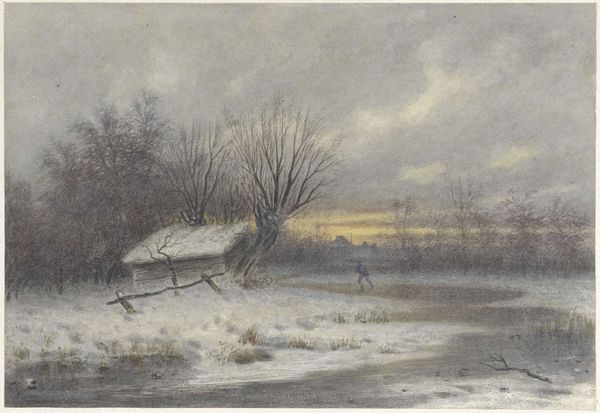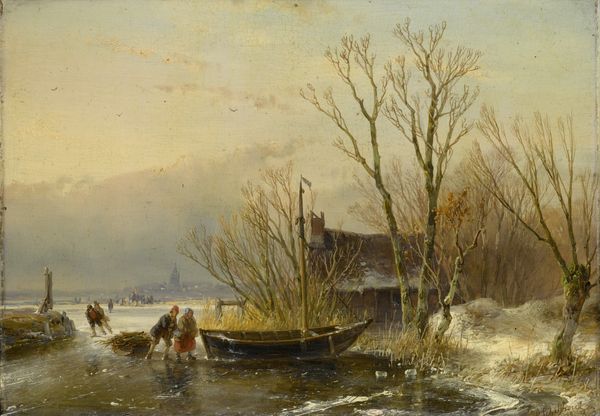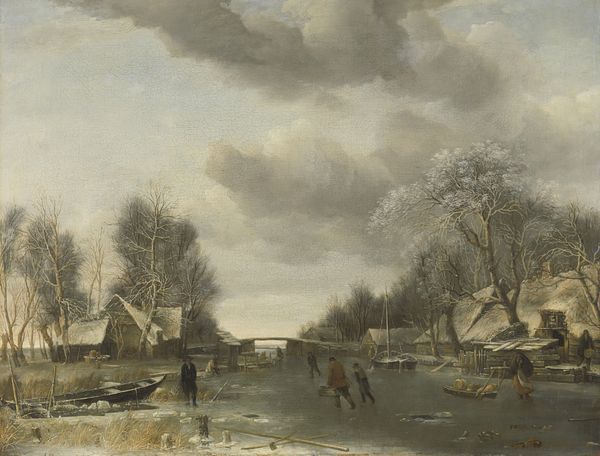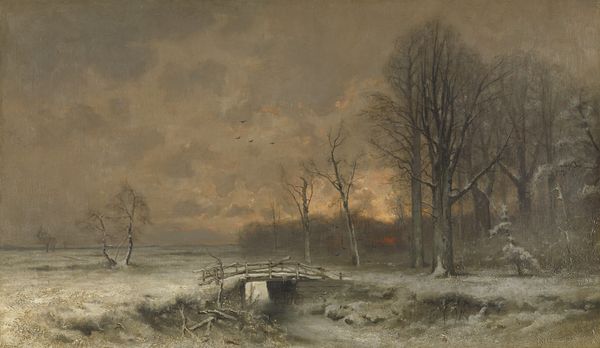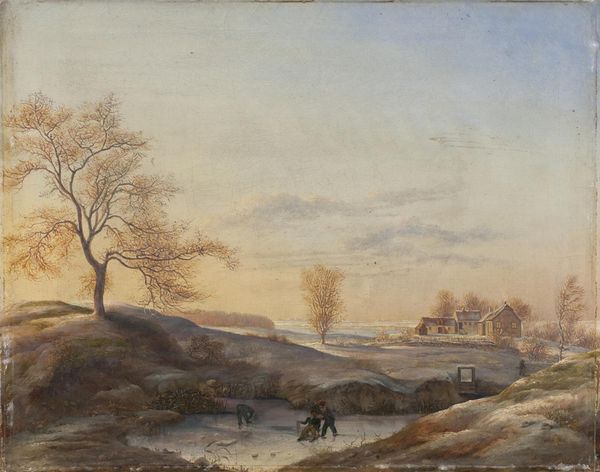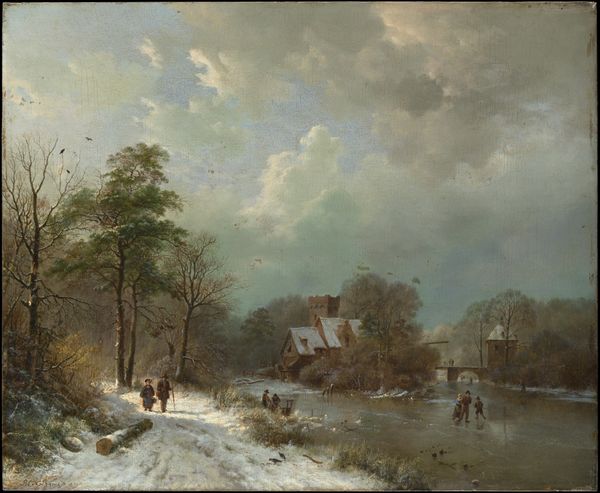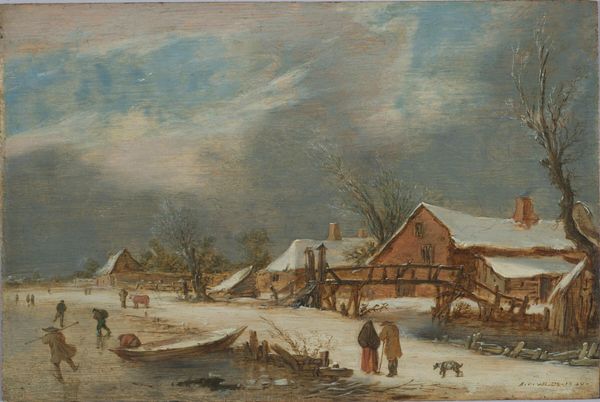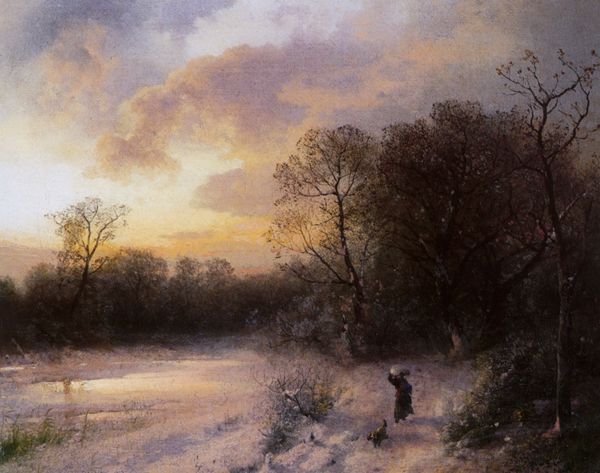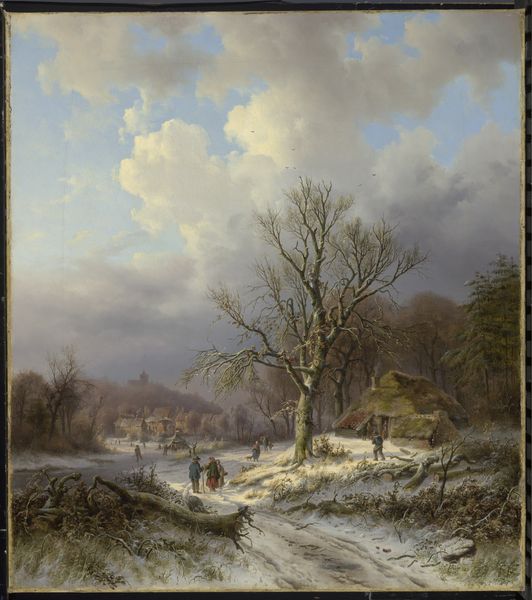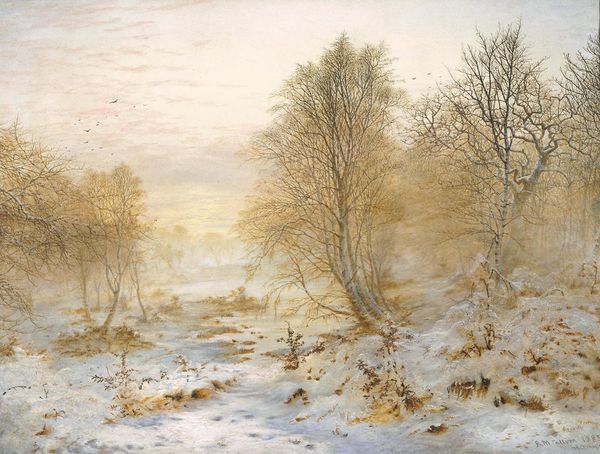
painting, oil-paint
#
tree
#
sky
#
painting
#
atmospheric-phenomenon
#
impressionist painting style
#
oil-paint
#
landscape
#
winter
#
figuration
#
oil painting
#
romanticism
#
natural-landscape
Copyright: Public domain
Curator: This is "Winterlandschaft," a painting crafted in 1830 by Raden Saleh, deploying oil paint to render this stark, natural-landscape scene. Editor: Immediately striking is the almost monochromatic palette—a symphony of muted grays and blues, creating a pervasive sense of cold and stillness. The textural variation, however, pulls the eye into the intimate depths of winter. Curator: Indeed. This work reflects the Romantic era’s fascination with nature’s power. Winter, of course, embodies themes of hibernation, endurance, and the cyclical nature of life. The scene holds archetypes relating to cultural understandings of shelter and community amidst a bleak backdrop. Editor: Note how Saleh articulates form through tonal variation and meticulous brushwork rather than relying on sharp outlines. See the wispy, bare branches and compare them to the more roughly rendered thatched roof on the distant structure: The variations in surface build dimension, guiding us carefully from the frozen stream to the horizon. Curator: That small figure near the house introduces the subtle element of human activity within this larger symbolic drama, adding nuance to an image steeped in German Romanticism and the individual's connection with nature. Editor: Speaking of figures, I notice two smaller, more spectral shapes beyond, toward the trees—are these simply effects of impasto and light, or can we consider these ghostly outlines symbolic figures too? Is the painting meant to depict a collective human condition within an unforgiving landscape? Curator: Potentially. We know Saleh often combined landscape with anecdotal figures—perhaps these forms amplify the Romantic-era theme of humans set against a vast, humbling landscape. They are mere brushstrokes in the total picture, yet add subtle depth to what would otherwise be an empty space. Editor: Whether literal representations or symbolic elements, the painting prompts us to appreciate formal harmony born from tonal constraints. The subtle use of chiaroscuro around the little house and figures adds intrigue and provides counterpoints for contemplating not just pictorial depth, but the conceptual significance of naturalism in a time marked by political turbulence in Europe. Curator: Viewing "Winterlandschaft," we uncover how nature's starkness serves not as merely a pictorial subject but as a carrier of meaning—linking individual experience to the broad cultural understanding of home, persistence, and humanity's place within it. Editor: And thanks to Saleh’s deft handling of pigment and careful composition, “Winterlandschaft” delivers a chilly yet calming aesthetic experience; each viewing reminds us to find visual respite in bleakness.
Comments
No comments
Be the first to comment and join the conversation on the ultimate creative platform.
